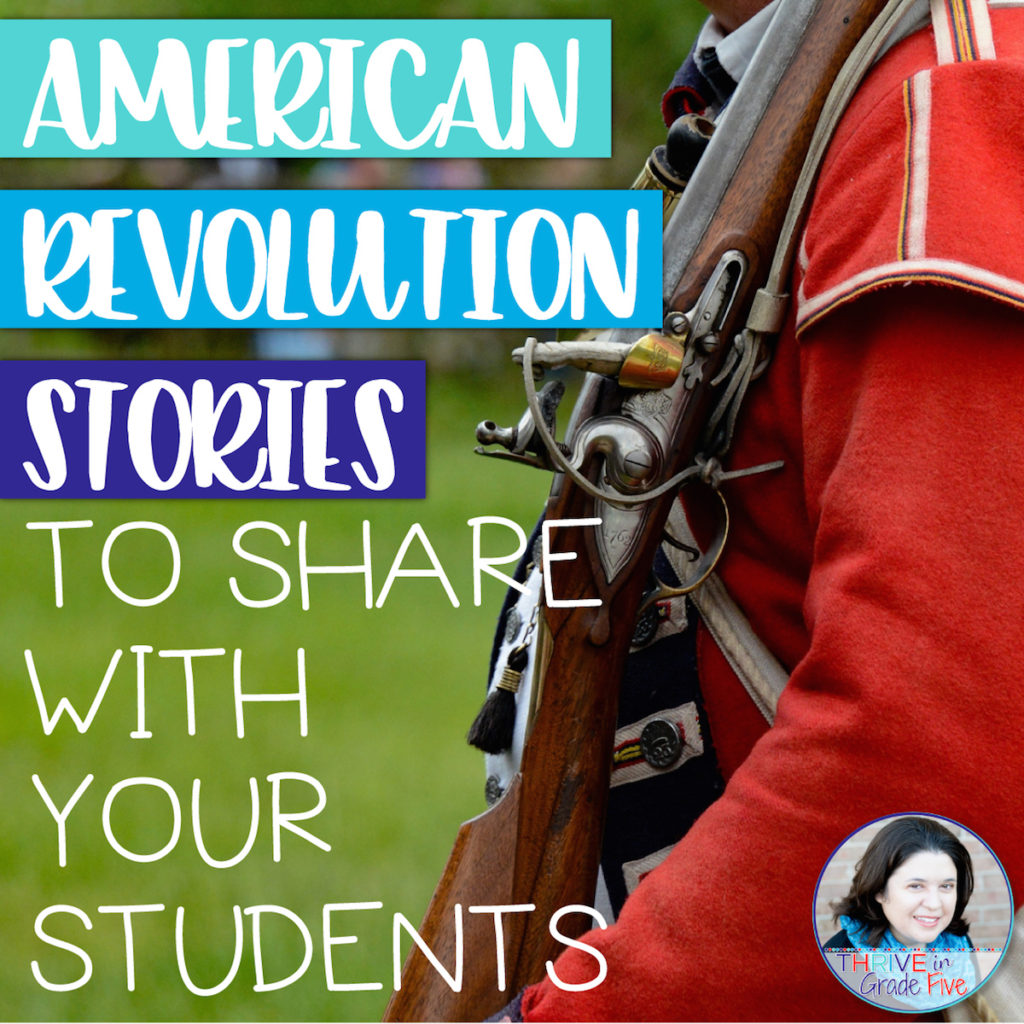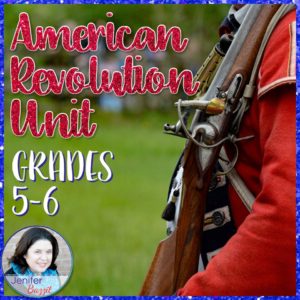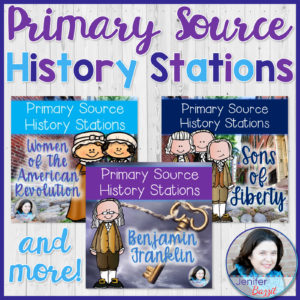Are you looking for American Revolution stories to share? This time period was full of larger-than-life people, fascinating stories, and inspiring events.
We all know that students love listening to stories, so why not include some stories in your social studies lessons?
Everyone knows about George Washington, Thomas Jefferson, and other major historical figures.
While these men and many others performed legitimately memorable, sometimes heroic deeds during the Revolutionary War, there are also some lesser-known figures who made a difference.
Read on!

Lucy Flucker Knox
Born into high society, Lucy Knox knew what she wanted and used her strong will to get it.
In 1756, Lucy was born to Thomas Flucker, a royal provincial secretary and his wealthy second wife, Hanna Waldo, in Boston.
Lucy’s exceptional education, unusual for a girl at that time, made her a frequent visitor at the local book shop, owned by Henry Knox.
Despite her family’s dissatisfaction at her involvement with a “common worker,” Lucy and Henry were married in 1774.
Although her family supported the Loyalist cause, Lucy joined her new husband in his views against the British and was quickly disowned by her family.
The new couple began life together as he became active in the fight for independence.
Lucy and Henry fled Boston after it was occupied by the British and she helped to conceal his large sword by quilting it into the lining of her cloak.
Following her husband to battle camps, the couple lived in rented facilities as their small family grew.
When the American Revolution ended, Lucy and her husband settled into a comfortable life in Boston society, where she especially loved to entertain and live extravagantly.
Sadly, only three of their ten children survived out of infancy.
Henry Knox died in 1806 after an infection due to a chicken bone being lodged in his throat.
Lucy lived another eighteen years after her husband’s passing, leaving a bankrupt estate.
Lucy’s life, in some ways heartbreaking, is an amazing story of bravery, commitment, and sacrifice.
Do you want these stories in pdf printable format? Enter your first name and email address below to have the printable stories sent to you immediately!
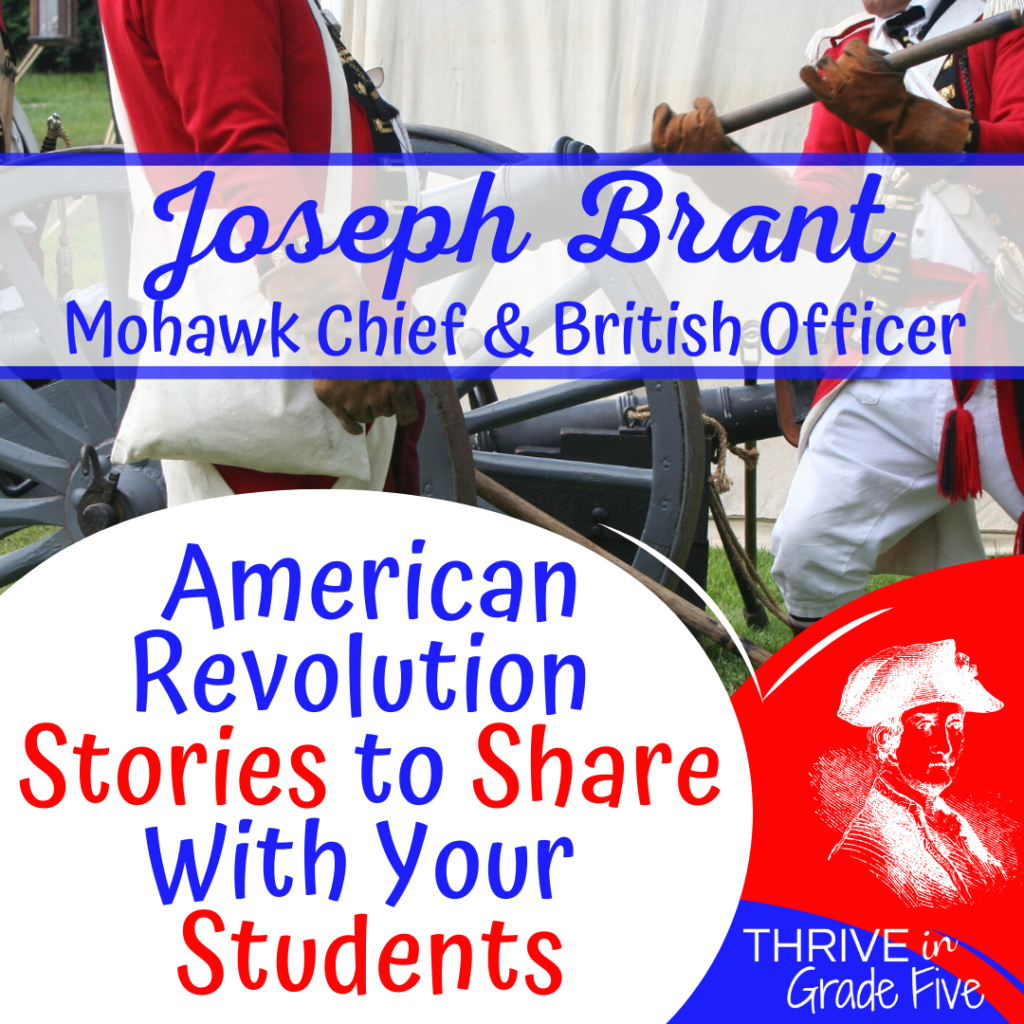
Joseph Brant (Thayendanegea)
In addition to all of the amazing stories of Patriots, I also like to share stories of Loyalist men and women.
Not everyone who lived in Colonial America believed in the patriot point of view.
Some people were neutral and others were loyal to England.
Joseph Brant’s story is a great one to share with students because he “wore many hats.”
He was a Native American War Chief, a British military officer, missionary, diplomat, and spokesman.
How did he go from being a member of the Mohawk tribe to serving as a British officer?
It all began when Thayendanegea enrolled at Moor’s Charity School for Indians in Connecticut, later known as Dartmouth College.
At this school, Brant learned to read and write English. He also decided to convert to the Anglican Christian faith.
After he left the school, Brant became a translator for an Anglican missionary and traveled throughout Native American lands.
At the age of thirteen, he followed his brother-in-law into battle and fought for the British in the French and Indian War.
Because of his connections to various Native American tribes and the British Army, he became a valued leader to both groups.
Brant convinced four of the six Iroquois tribes that a victory for the Continental Army would equal loss of land for most Native Americans. So, he led the tribes to fight on the British side in the American Revolution.
Continuing to lead Native American fighters during the remainder of the American Revolution, Brant worked to encourage continued participation in the Loyalist cause even after the British surrendered at Yorktown.
Sadly, the treaty that ended the American Revolution failed to recognize the independence or rights of any Native American group.
Eventually, Brant was awarded a grant of land on the Grand River in Ontario.
He ruled his people there peacefully, continued his missionary work, and kept up the fight for Native American rights in the new United States.
He died in 1807.
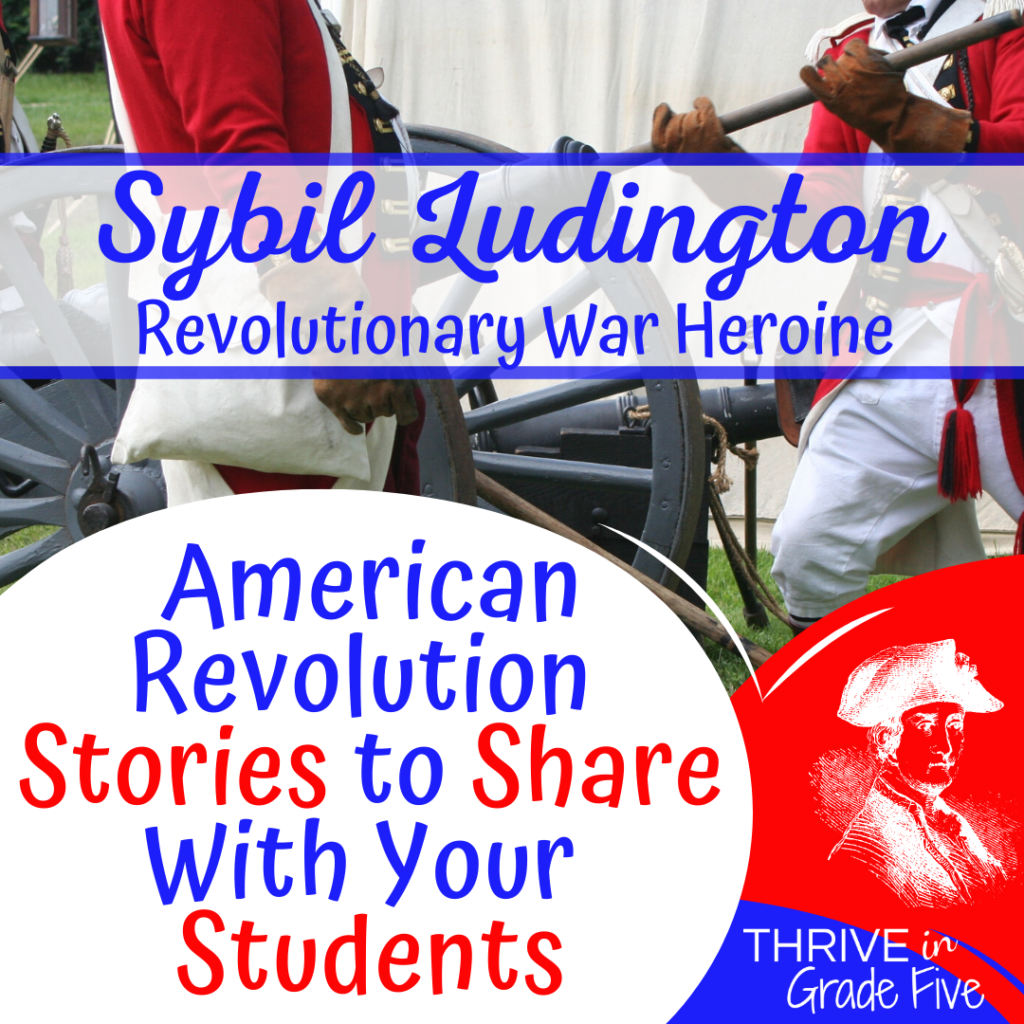
Sybil Ludington
Sybil Ludington was the first of twelve children born to Colonel and Mrs. Henry Ludington.
The Colonel was the commander of the militia in Dutchess County, New York, and his farm was a meeting place for spies for the American cause.
On the evening of April 26, 1777, a messenger told Ludington that the British were burning the nearby town of Danbury.
Unfortunately, the informant didn’t know the roads well and his horse was spent.
How would Ludington inform the Patriots? How would they save Danbury?
It was then that Colonel Ludington told his capable daughter, Sybil, only sixteen, to take his horse and alert all available men.
They were to meet at Ludington’s house immediately to form a plan of attack.
Through sheets of rain, Sybil mounted her horse and, with only a stick to defend herself, rode forty miles over rough, unfamiliar trails and through thickets to sound the alarm.
She avoided British patrols and was never captured, unlike Paul Revere.
As a result of her bravery, hundreds of soldiers gathered at Ludington’s farm to defend the town of Danbury.
Sybil received the congratulations of General George Washington for her heroic efforts, and is memorialized in a statue by Lake Gleneida in the town of Carmel, New York.
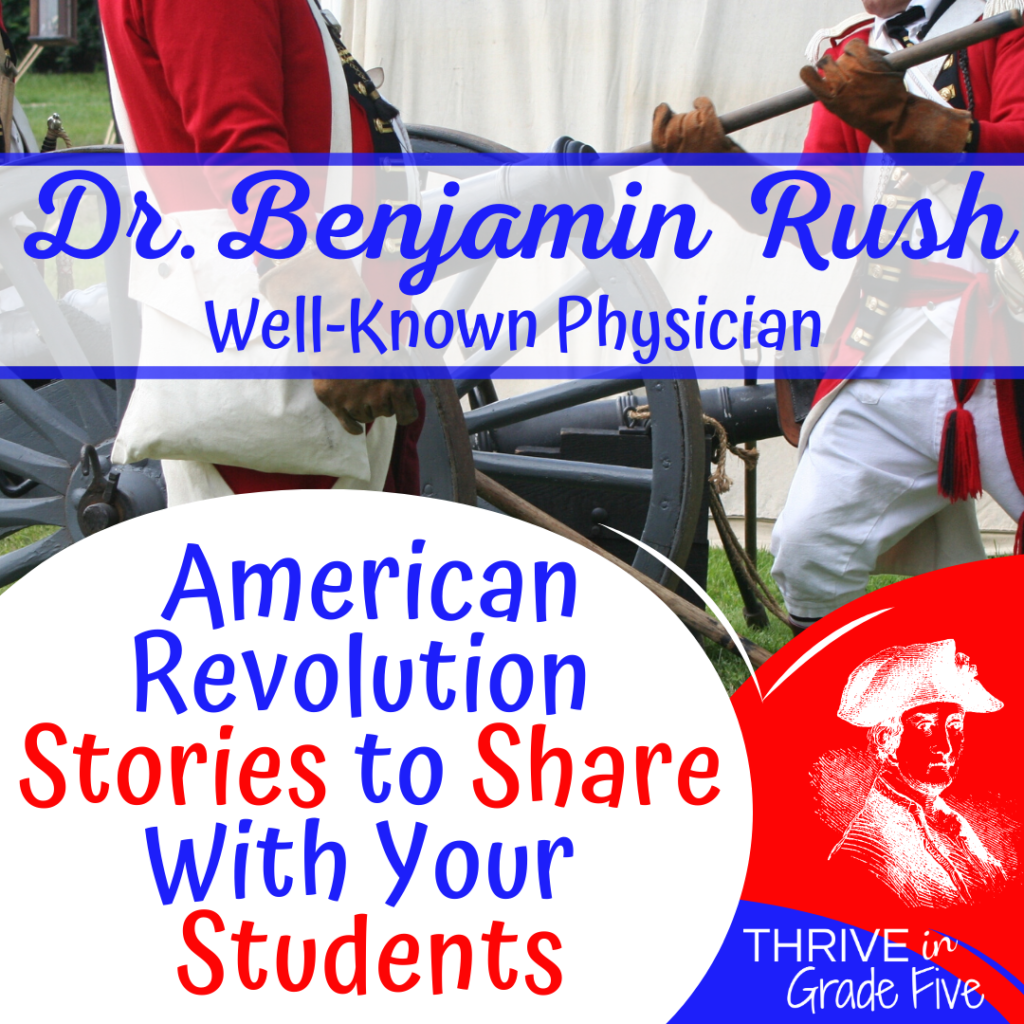
Dr. Benjamin Rush
Now known as the Father of American Psychiatry, Benjamin Rush was born near Philadelphia in 1746.
Rush began his college education at a young age and graduated with a bachelor’s degree at the age of 14. He went on to pursue a medical education.
In 1769, Dr. Rush settled in Philadelphia to open a medical practice. He taught chemistry and became active in the abolitionist movement.
How was Dr. Rush involved in the American Revolution?
In addition to signing the Declaration of Independence, Dr. Rush used his medical knowledge to treat Continental Army soldiers’ illnesses and injuries.
George Washington is a legendary figure to us today but did you know that some colonists questioned his ability to lead the Continental Army? Dr. Benjamin Rush was one of those people.
Dr. Rush resigned his medical post in the Continental Army in 1778 because he felt that the military hospitals were being managed ineffectively. He went on to challenge General Washington’s judgement in military matters.
This was an action that he would come to regret. General Washington considered a court martial for Dr. Rush but allowed him to resign instead. Questioning General Washington damaged his reputation for the remainder of his life.
Following the American Revolution, Dr. Rush taught thousands of medical students at the University of Pennsylvania.
Noticing the often brutal treatment given to the mentally ill, Dr. Rush worked to change the medical standards for the assessment and treatment of these patients.
Sadly, Dr. Rush died of typhus fever on April 19, 1813. He is buried in the Christ Church Burial Ground in Philadelphia.

Benjamin Franklin
One of our most recognizable founding fathers, Benjamin Franklin had a hand in nearly every aspect of the American Revolution but let’s focus for a moment on his work as the colonial ambassador to France.
Starting in 1776, Franklin’s job was to work toward gaining French support for the American Revolution.
Franklin had a big job ahead of him. The French had a strong dislike for the British, but still, they were not eager to spend the money needed to become involved in a conflict led by rebels across the ocean.
How would Franklin change their minds and get the French onboard to help?
Did he march into the royal court and demand an audience with the king and high-ranking officials?
No! He infiltrated society. He rubbed elbows with the wealthy and powerful, attended their events, and bantered back and forth with the people who he knew held sway with the French government.
The wealthy upper class in France took to Franklin right away.
He became a symbol of “New World Enlightenment” as he skillfully laid out the case for helping the colonies in the American Revolution.
Franklin worked his way through upper class French society and convinced those in charge that helping the colonists win against England was the right thing to do.
Franklin did his job well and secured French support, allowing the Continental Army to defeat the British.
Historians suggest that the American colonies would not have won the American Revolution without French help, so we certainly owe a debt of gratitude to the beloved Benjamin Franklin.
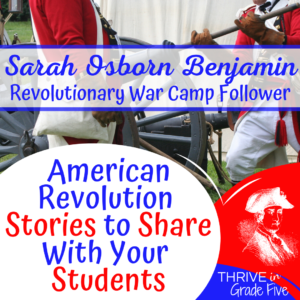
Sarah Osborn Benjamin
The story of Sarah Osborn Benjamin helps us to understand the lives of female Revolutionary War camp followers. Following the Continental Army was difficult, full of struggle, uncertainty, and hard work.
When Sarah’s husband, Aaron Osborn, reenlisted in the Continental Army in 1780, she reluctantly went along with him.
During the three years she spent following the army from place to place, she had two children. Although she wanted to provide a more stable home for her children, Sarah’s husband insisted that she continue to follow him from place to place as he served.
While the Continental Army prepared for battle at Yorktown, Sarah worked in the camp preparing meals, serving coffee, and repairing and washing clothing.
When the American Revolution finally ended, the family settled in a home. The stability of having a home was short-lived, however, because Aaron Osborn soon abandoned Sarah and their children and relocated to New York to marry another woman. #whatamonster – right?!?
Sarah moved on and married another Revolutionary War veteran, John Benjamin.
After both John Benjamin and Aaron Osborn died, Sarah put aside the embarrassment she felt at her first husband’s abandonment and bigamy and asked to receive a pension as the widow of Aaron Osborn.
She was granted an annual pension of $88.
Thanks to Sarah’s written petition detailing her husband’s service along with her time as a camp follower, we know more about what life was like for the ladies who followed the Continental Army. Sadly, most camp followers didn’t write down the events of their lives, so their stories are lost to history.
Bravery and honor come in many forms, as illustrated by the colorful lives profiled here.
We owe a debt of gratitude to the men and women who gave up so much to fight for independence.
If you have an American Revolution story of your own that you love to share with students, please comment below and I will consider adding it to this blog post!
If you’d like the above stories sent to you in a printable format, simply enter your first name and email address below:
Looking for a ready-to-go American Revolution Unit to use in your classroom? You’ll love this one:
You’ll love these Primary Source History Stations:


